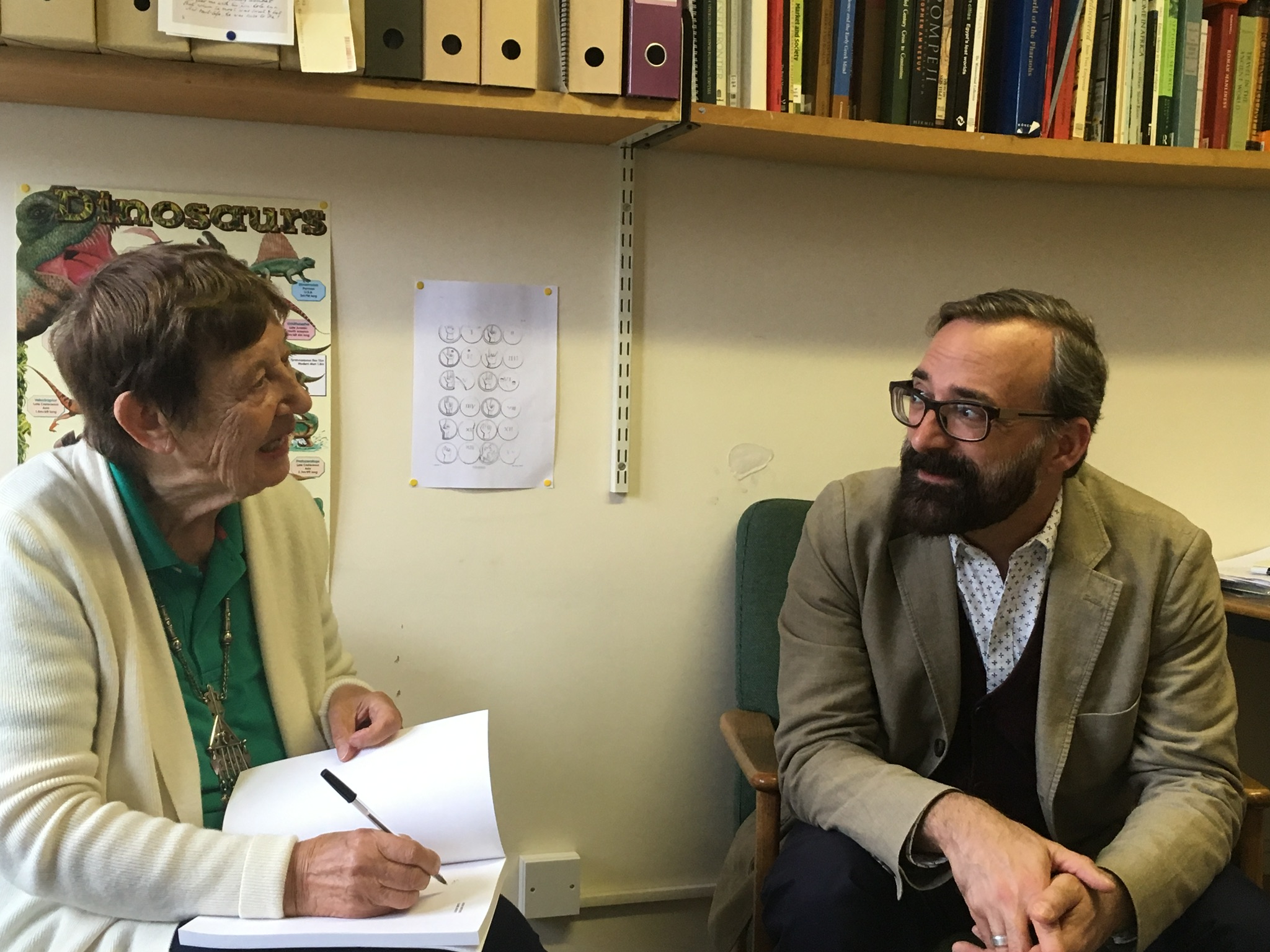Tokens, Writing and (Ac)counting: A Conversation with Denise Schmandt-Besserat and Bill Maurer
DOI:
https://doi.org/10.31273/eirj.v5i1.196Keywords:
token, writing, number, dactylonomy, cognition, material cultureAbstract
In her foundational study of Neolithic clay tokens, the renowned archaeologist Denise Schmandt-Besserat identified that different token shapes represented different goods and were used in accounting and distribution. When these tokens came to be stored in sealed clay envelopes (likely representing a debt), each token was impressed on the outside of the envelope before being placed inside (thus allowing people to see quickly what was within). Three-dimensional objects were thus reduced to two-dimensional representations, the first form of writing (and contributing to cuneiform script). These clay envelopes in turn developed into pictographic tablets; here each token did not have to be impressed into the clay in a 'one, one, one' system, but instead quantity was indicated by a numerical symbol - abstract number was born. Much of Schmandt-Besserat’s work can be found online at https://sites.utexas.edu/dsb/. Her book ‘How Writing Came About’ was listed by American Scientist magazine as one of the 100 books that shaped science in the 20th century, and she remains an active expert on all things ‘token’.
Downloads
References
Alföldi-Rosenbaum, E. (1971), ‘The finger calculus in antiquity and the middle ages’, Chiron, 5, 1-9
DuPont, Q. (2018), ‘Experiments in algorithmic governance: a history and ethnography of “The DAO”, a failed Decentralized Autonomous Organization”, in Campbell-Verduyn, M. Bitcoin and Beyond: Cryptocurrencies, Blockchains and Global Governance, Abingdon: Routledge (in press)
Falkenstein, A., Green, M.V., Nissen, H.J. and Englund, R.K. (1936-1994), Archaische Texte aus Uruk, 5 vols, Berlin: Deutsche Forschungsgemeinschaft
Froehner, W. (1884), ‘Le comput digital’, Annuaire de la Société de Numismatique, 3-9
Hart, K. (2005), ‘Notes towards an anthropology of money’ Kritikos, 2, http://intertheory.org/hart.htm, accessed 26 June 2017
Lang, M. (1959), ‘Allotment by tokens’ Historia, 8, 80-89
Malafouris, L. (2013), How Things Shape the Mind. A Theory of Material Engagement, Cambridge, Mass.: MIT Press
Moghimi, N. and Fazeli Nashli, H. An Archaeological Study on the Tokens of Tepe Zagheh, Qazvin Plain, Iran, http://sites.utexas.edu/dsb/files/2015/04/nilufar.pdf, accessed 15 June 2017
Overmann, K. (2016), ‘Numerosity structures the expression of quantity in lexical numbers and grammatical number’, Current Anthropology 56(5), 638-53
Overmann, K. (2016), ‘Number concepts are constructed through material engagement. A reply to Sutcliff, Read, and Everett’, Current Anthropology 57(3), 352-56
Overmann, K. (2016), ‘Beyond Writing: the development of literacy in the Ancient Near East’, Cambridge Archaeological Journal 26, 285-303
Schmandt-Besserat, D. (1992), Before Writing, 2 vols, Austin: University of Texas Press
Schmandt-Besserat, D. (1996), How Writing Came About, Austin: University of Texas Press
Schmandt-Besserat, D. (2007), When Writing Met Art, Austin: University of Texas Press
Schmandt-Besserat, D. (2010), ‘The token system of the Near East: its role in counting, writing, the economy and cognition’, in Morley, I. and Renfrew, C. The Archaeology of Measurement: Comprehending Heaven, Earth and Time in Ancient Societies, Cambridge: Cambridge University Press, 27-34

Downloads
Published
Issue
Section
License
Authors who publish with this journal agree to the following terms:
Authors retain copyright and grant the journal right of first publication with the work simultaneously licensed under a Creative Commons Attribution License (CC-BY), which permits use and redistribution of the work provided that the original author and source are credited, a link to the license is included, and an indication of changes which were made. Third-party users may not apply legal terms or technological measures to the published article which legally restrict others from doing anything the license permits.
If accepted for publication authors’ work will be made open access and distributed under a Creative Commons Attribution (CC-BY) license unless previously agreed with Exchanges’ Editor-in-Chief prior to submission.
Authors are able to enter into separate, additional contractual arrangements for the non-exclusive distribution of the journal's published version of the work (e.g., post it to an institutional repository or publish it in a book), with an acknowledgement of its initial publication in this journal.
Authors are permitted and encouraged to post their work online (e.g., in institutional repositories or on their website) prior to and during the submission process, as it can lead to productive exchanges, as well as earlier and greater citation of published work. (see: The Effect of Open Access)
